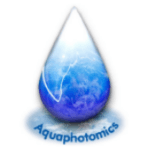※プログラムによって機械的に日本語表現を生成しており、不正確な表現が含まれている場合があります。英語版ページも合わせてご参照ください。
アクアフォトミクスで使用される測定および分析手順

アクアフォトミクスで使用される方法は、次の手順で構成されています。
- 生物学的または水系(例えば、キュベット内の液体として、または表面/皮膚に直接)
- 特定の摂動(温度、光、分子など)によるシステムの摂動
- スペクトルの取得(非侵襲的動的研究の場合、吸光度、透過率など、VIS NIR範囲が最も適切です)
- 摂動ごとの水バンドを見つけて割り当て、水スペクトルパターンWASPを作成するためのスペクトル変動の多変量解析
- 正規化されたWASPをアクアグラムで視覚化する
- WASPをaquaphotomeデータベースに追加します
- 生物学的、化学的、物理的およびより多くのアプリケーション分野で使用するための水の機能を解釈および理解する
アクアフォトミクスで使用されるデータ処理
検出器の改良とコンピューターの継続的な開発により、時系列として、さまざまな可能な摂動の下で、膨大な数のスペクトルをリアルタイムで取得できます。 このような豊富なスペクトル情報を評価し、完全に調査するために、多変量解析が使用されます。 非常に頻繁に新しい方法を開発する必要があり、物理的および化学的情報がスペクトル内で重複しています。
アクアフォトミクスケモメトリックス法は継続的にさらに開発され、さまざまな摂動下の水スペクトルが体系的に取得されます。 Aquaphotomicsは、さまざまな分野の未知の現象を理解する上で、すでに新しい視野を開いています。 アクアフォトームと呼ばれる活性化された水バンドの特徴的なパターンの大規模なデータベースが取得されると、それらは特定の生物学的機能、(水)分子構造に関連付けられ、水の生物学、化学、物理学を理解するために使用されます。
水中の12の主要なWAMACS最初の倍音(1300〜1600nm)
ウォーターバンドは、2つの方法で識別されています。1)実験的および2)公開されているウォーターバンドの倍音周波数の計算です。 基本的な水分子の振動が割り当てられているIR範囲。
実験的に、アクアフォトミクスでは、さまざまな生物学的および水系の広範な研究の結果として、12の主要なWAMACS(C1-C12)が水の最初の倍音(1300〜1600 nm)で発見されました。 新しいWAMACSとWABは、より多くのシステムと摂動のために発見されてきました。
摂動に応じて水によるエネルギー吸収の変化が最大になる波長範囲であるWAMACSは、水の働きを理解するための「情報のハブ」として使用されます。
現時点では、バンドの割り当てや現代的な方法での水の理解がなくても、WASPはシステム機能の全体的なマーカーとして使用できます。
しかし、アクアフォトミクスアプローチを通じて得られた実験的に得られた結果を現代の知識に橋渡しするために、既知の水分子構造に従ってWAMACSを割り当てることが試みられました。 従来、水分子構造は、水素結合、および水二量体、三量体、スーパーオキシド、水溶媒和シェルなどの水の立体配座によって特徴付けられます。
これまでのところ、アクアフォトミクスで実験的に発見されたWAMACSは、IR範囲のさまざまな水構造バンドについて公開されている特徴的な水バンドと一致していることが示されています。 1つのWAMAC内では、倍音範囲の振動モードが重複しているため、複数の割り当てが可能です。 2番目と3番目の倍音では、水の同様のスペクトル範囲が見つかりますが、これらの倍音にはさらに多くの重複があります。
特徴的なウォーターバンドの大規模なデータベースが取得されると、それらは特定の生物学的機能に関連付けられ、その後、生物学、化学、および生物学的および水系の生物学、化学、物理学の予測、診断、および理解に使用できます。
次の表では、水中の12のWAMACSの最初の倍音が、現在利用可能なリソースに基づいた暫定的な割り当てとともに示されています。 文献および実験的証拠からの現代の水分子割り当てのリストは継続的に拡大しています。 EMスペクトルの全範囲について同様の表を作成できます。 水システムの物理学に関する新しい見方は、将来、WAMACSを割り当てる方法を変えるでしょう。
| WAMACS | Range, nm | Assignment | Reference |
| C1 | 1336-1348nm | ν3, H2O asymmetric stretching vibration | (Ozaki 2002) |
| C2 | 1360-1366nm | Water solvation shell, OH-(H2O)1,2,4 | (Xantheas 1995, Robertson et al. 2003) |
| C3 | 1370-1376nm | ν1 + ν3, symmetrical stretching fundamental vibration and H2O asymmetric stretching vibration | (Ozaki 2002) |
| C4 | 1380-1388nm | Water solvation shell, OH-(H2O)1,4 and superoxide, O2-(H2O)4 | (Xantheas 1995, Weber et al. 2000) |
| C5 | 1398-1418nm | Free water and free OH- (S0) or trapped water | (Kaffka et al. 1990, Iwamoto, Uozumi, and Nishinari 1987, Kojić et al. 2014, Maeda et al. 1995) |
| C6 | 1421-1430nm | Water hydration, H-OH bend and O…O | (Tsenkova 2009, Williams 2009, Esquerre et al. 2009, Tsenkova et al. 2004) |
| C7 | 1432-1444nm | Water molecules with 1 hydrogen bond (S1) | (Segtnan et al. 2001b, Cattaneo et al. 2009, Ozaki 2002) |
| C8 | 1448-1454nm | ν2 + ν3, Water solvation shell, OH-(H2O)4,5 | (Cattaneo et al. 2009, Ozaki 2002) |
| C9 | 1458-1468nm | Water molecules with 2 hydrogen bonds (S2) | (Franks 1973, Tsenkova et al. 2004) |
| C10 | 1472-1482nm | Water molecules with 3 hydrogen bonds (S3) | (Franks 1973, Ozaki 2002) |
| C11 | 1482-1495nm | Water molecules with 4 hydrogen bonds (S4) | (Gowen et al. 2009, Segtnan et al. 2001b, Ozaki 2002) |
| C12 | 1506-1516nm | ν1, ν2, symmetrical stretching fundamental vibration, and doubly degenerate bending fundamental or strongly bound water | (Gowen et al. 2009, Segtnan et al. 2001a, Headrick et al. 2005) |
Cattaneo, T. M.P., G. Cabassi, M. Profaizer, and R. Giangiacomo. 2009. “Contribution of Light Scattering to near Infrared Absorption in Milk.” Journal of Near Infrared Spectroscopy 17 (6):337-343. doi: .
Esquerre, C. , A. Gowen, R. Tsenkova, C. O’Donnell, and G Downey. 2009. “Identification of water matrix coefficients in mushrooms (Agaricus bisporus) using robust ensemble of Monte Carlo uninformative variable elimination.” 14th International Conference on Near Infrared Spectroscopy, Bangkok, Thailand.
Franks, F., ed. 1973. Water: A comprehensive treatise Vol. 3. New York: Plenum Press.
Gowen, A. , R. Tsenkova, C. Esquerre, G. Downey, and C. O’Donnell. 2009. “Use of near infrared hyperspectral imaging to identify water matrix coordinates in mushrooms (Agaricus Bisporus) subjected to mechanical vibration.” Journal of Near Infrared Spectroscopy 17 (6):363-371. doi: 10.1255/jnirs.860.
Headrick, J.M., E.G. Diken, R. S. Walters, N. I. Hammer, R. A. Christie, J. Cui, E. M. Myshakin, M.A. Duncan, M.A. Johnson, and K. D. Jordan. 2005. “Spectral signatures of hydrated proton vibrations in water clusters.” Science 308 (5729):1765-1769. doi: 10.1126/science.1113094
Iwamoto, M., J. Uozumi, and K. Nishinari. 1987. “Preliminary investigation of the state of water in foods by near infrared spectroscopy.” Proceedings of the International NIR/NIT Conference, Budapest, Hungary.
Kaffka, K.J., L. Horváth, F. Kulcsár, and M. Váradi. 1990. “Investigation of the state of water in fibrous foodstuffs by near infrared spectroscopy.” Acta Alimentaria 11 (2):125-137.
Kojić, D., R. Tsenkova, K. Tomobe, K. Yasuoka, and M. Yasui. 2014. “Water confined in the local field of ions.” ChemPhysChem 15 (18):4077-4086. doi: 10.1002/cphc.201402381.
Maeda, H., Y. Ozaki, M. Tanaka, N. Hayashi, and T. Kojima. 1995. “Near infrared spectroscopy and chemometrics studies of temperature-dependent spectral variations of water: relationship between spectral changes and hydrogen bonds.” Journal of Near Infrared Spectroscopy 3 (4):191-201. doi: 10.1255/jnirs.69.
Ozaki, Y. 2002. “Applications in chemistry in near-infrared spectroscopy: Principles, instruments and applications.” In, edited by H.W. Siesler, Y. Ozaki, S. Kawata and H. M. Heise. Weinheim, Germany: Wiley-VCH Verlag GmbH.
Robertson, W. H., E.G. Diken, E.A. Price, J-W. Shin, and M.A. Johnson. 2003. “Spectroscopic determination of the OH− solvation shell in the OH−·(H2O) n clusters.” Science 299 (5611):1367-1372. doi: 10.1126/science.1080695.
Segtnan, V. H., Š Šašić, T. Isaksson, and Y. Ozaki. 2001a. “Studies on the Structure of Water Using Two-Dimensional Near-Infrared Correlation Spectroscopy and Principal Component Analysis.” Analytical Chemistry 73 (13):3153-3161. doi: 10.1021/ac010102n.
Segtnan, V.H., S. Šašić, T. Isaksson, and Y. Ozaki. 2001b. “Studies on the structure of water using two-dimensional near-infrared correlation spectroscopy and principal component analysis.” Analytical chemistry 73 (13):3153-3161. doi: 10.1021/ac010102n.
Tsenkova, R. 2009. “Aquaphotomics: dynamic spectroscopy of aqueous and biological systems describes peculiarities of water.” Journal of Near Infrared Spectroscopy 17 (6):303-313. doi: 10.1255/jnirs.869.
Tsenkova, R.N., I.K. Iordanova, K. Toyoda, and D.R. Brown. 2004. “Prion protein fate governed by metal binding.” Biochemical and biophysical research communications 325 (3):1005-1012. doi: 10.1016/j.bbrc.2004.10.135.
Weber, J. M., J. A. Kelley, S.B. Nielsen, P. Ayotte, and M.A. Johnson. 2000. “Isolating the spectroscopic signature of a hydration shell with the use of clusters: Superoxide tetrahydrate.” Science 287 (5462):2461-2463. doi: 10.1016/j.bbrc.2004.10.135.
Williams, P. 2009. “Influence of water on prediction of composition and quality factors: The aquaphotomics of low moisture agricultural materials.” Journal of Near Infrared Spectroscopy 17 (6):315-328. doi: 10.1255/jnirs.862.
Xantheas, S.S. 1995. “Ab initio studies of cyclic water clusters (H2O)n, n=1–6. III. Comparison of density functional with MP2 results.” The Journal of Chemical Physics 102 (11):4505-4517. doi: 10.1063/1.469499.
